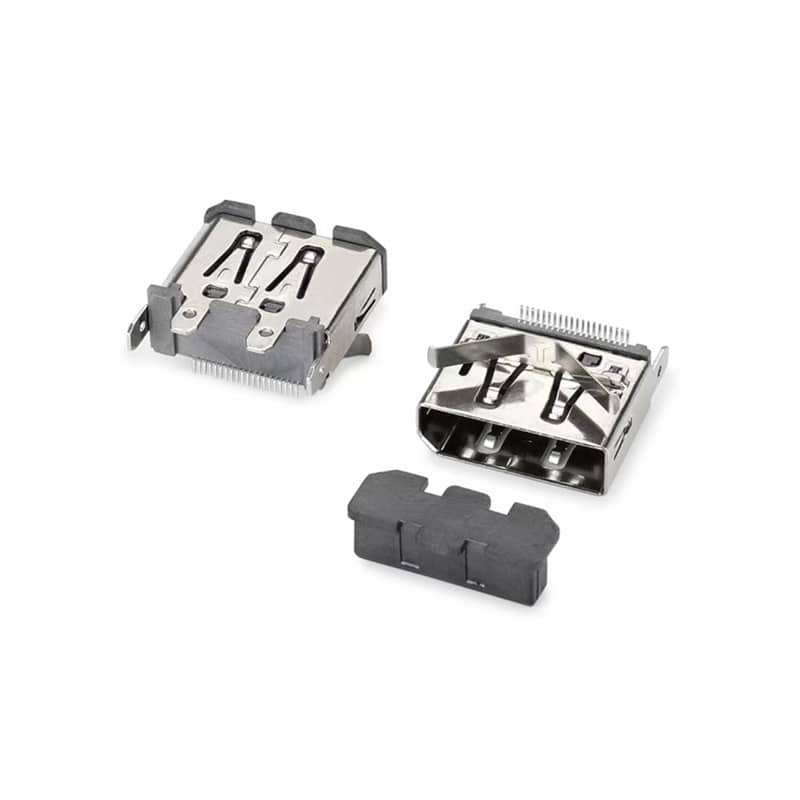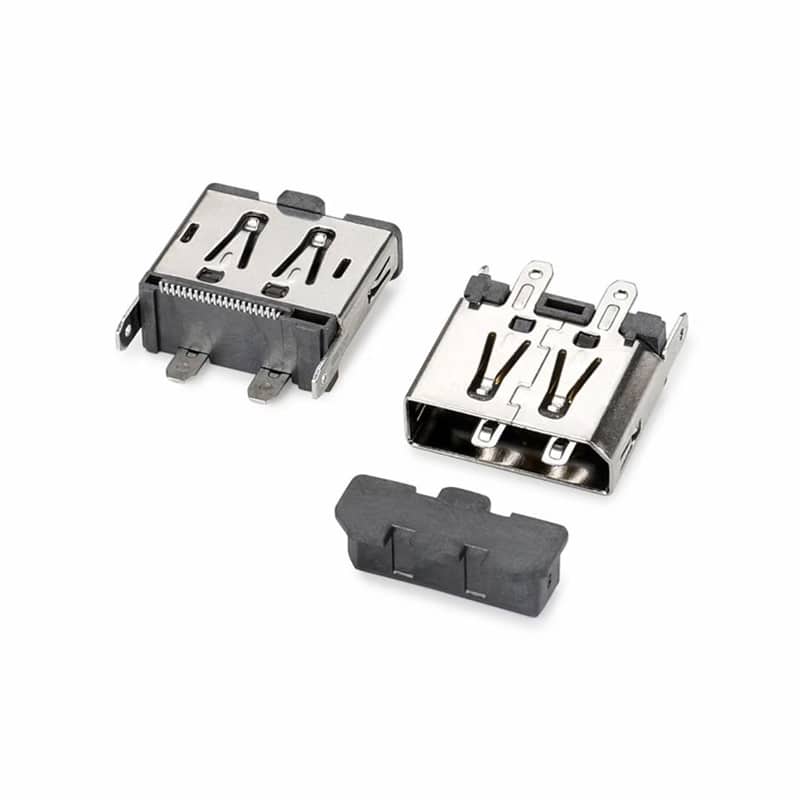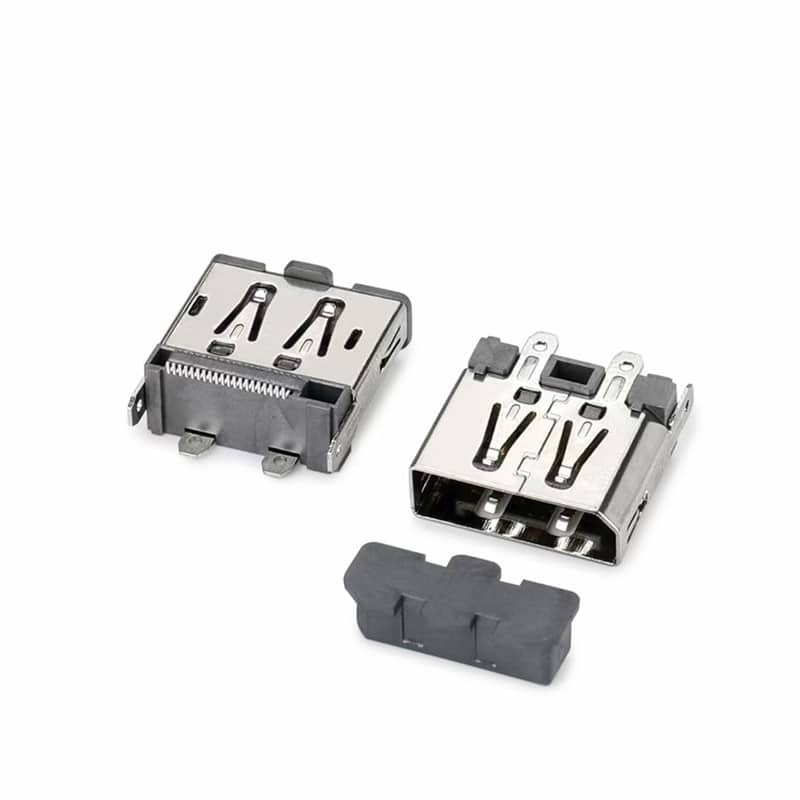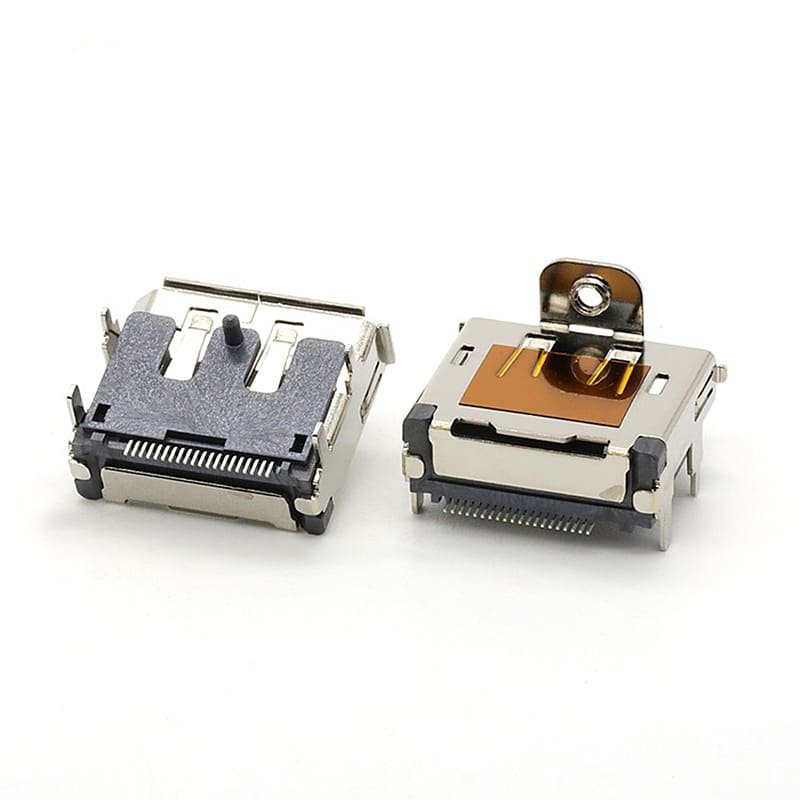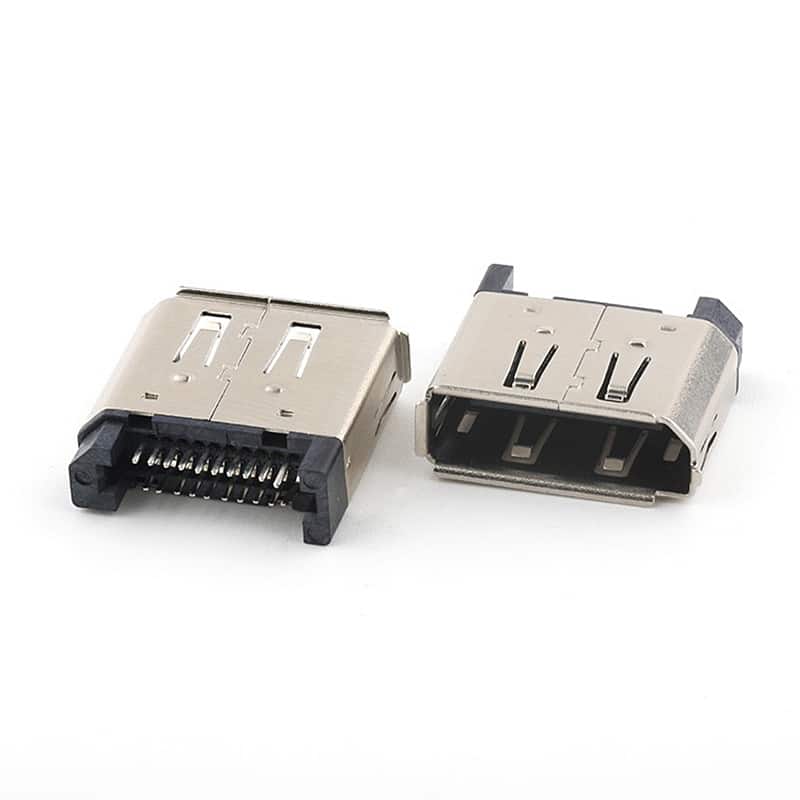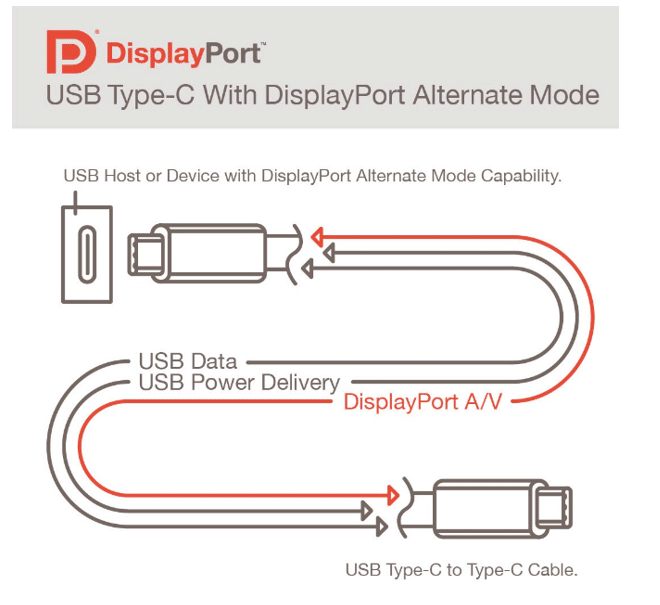DP Connector, DisplayPort (DP) is a digital display interface used to connect video sources, such as computers and gaming consoles, to displays, such as monitors, televisions, and projectors. It was developed by VESA (Video Electronics Standards Association) and first introduced in 2006.
DisplayPort supports high-definition video and audio transmission and offers several advantages over other video interfaces, such as VGA and DVI. These advantages include:
- Higher bandwidth: DisplayPort supports higher resolutions, refresh rates, and color depths than VGA and DVI.
- Multiple displays: DisplayPort allows for multiple displays to be connected to a single source, using daisy-chaining or Multi-Stream Transport (MST).
- Audio support: DisplayPort supports high-quality audio transmission along with video.
- Hot-plug support: DisplayPort supports hot-plugging, meaning that a display can be connected or disconnected while the source is running.
- Smaller connector: DisplayPort connectors are smaller than DVI and VGA connectors, making them more suitable for small devices such as laptops and tablets.
DisplayPort has undergone several revisions since its introduction, with each new version offering additional features and capabilities. The latest version, DisplayPort 2.0, was introduced in 2019 and supports resolutions up to 16K at 60Hz, as well as several other advanced features
With several full-scale revolutions of computer technology, a variety of desktops and laptops have reached out to almost every household. If you are the one who often uses a PC, one of the video output interfaces named DisplayPort is probably familiar to you, at least you should have seen it on your PC. But do you really know what DP is? Don’t worry. Based on our prior explanations of other video display interfaces, it is a piece of cake to make you be a proficient in the meat and potatoes of DisplayPort.
Without exception, everything starts from its basic definition. It is recognized that DisplayPort (abbreviated as DP) refers to a standardized digital display port that is designed by Video Electronics Standards Association (VESA) in 2006, acting as a universal interface on the notebooks. It can deliver both audio and video output, which is usually used for the connectivity between video sources and displays. Aimed at taking the place of the traditional port(like DVI), DP is able to perform well in the internal display and external display, backward compatible with all the video output ports launched prior to its occurrence.
There were two types of DP connectors before 2016, that is, Standard DP and Mini DP. Here highlights the latter one. Have you remembered the destiny of Mini-DVI on MacBook in our last post? Well, Mini DP is its takeover, a smaller-size type of formal DisplayPort. Regardless of the difference in size, Mini DP supports the same resolution of 2560*1600 as standard DP. Launched by Apple, this connector is not only applied to the MacBook series, but used in LED Cinema Display. However, due to the continuous progress of technology, it still can’t get rid of the fate of being eliminated, which is replaced by the later powerful USB C port.
Then it turns to the iteration versions of DP. Up to now, DP has been developed to the latest 2.0 version. Let us take a close look at all the DP versions.
DP 1.0 to DP 1.1
Due to the short update interval, we can put DP 1.0 and 1.1 versions together. The first was created in 2006, carrying a bandwidth of 10.8Gbps. And the following versions (1.1-1.1a) were put into use within the next two years, which brought a change in transmission media. DP 1.1 is allowed to transfer videos through fiber optic so that the transmission distance can be increased. Moreover, DP 1.1a fit better with HDTV on account of the addition of High-bandwidth Digital Content Protection (HDCP) to DisplayPort Content Protection.
DP 1.2
The 1.2 version came on the scene in 2010. The biggest improvement it made involves the increase of transmission speed, which doubles in High Bit Rate 2. Additionally, DP 1.2 specification supports multi-stream transmission and 4K resolution. This means you can get a higher definition, frame rate and color depth. Worth noting that Apple’s Mini DP is compatible with this version as well.
DP 1.3
The next version, called DP 1.3, still focused on updating the transfer bandwidth, up to 32.4Gbps. Therefore, it enables DP to support a higher level of displays or monitors, including 4K(120Hz), 5K(60Hz) and even 8K(30Hz) screens. Besides, this specification enlarged the value of DP by integrating data transfer, audio/ visual transmission and other functions into one cable.
DP 1.4
Released in 2016, DP 1.4 didn’t redefine new transmission speed, but added more functions, such as Display Stream Compression tech, Forward Error Correction and HDR meta transport. With these priorities, it is capable of supporting 8K(60Hz) display and providing visually lossless images while connecting to a monitor.
DP 2.0
When it comes to DP 2.0, we are always inclined to compare it with the latest HDMI 2.1. According to the design scheme in 2019, DP 2.0 possessed the maximum bandwidth of 80Gbps, which was 1.6 times higher than HDMI 2.1, and adopted a brand-new encoding mechanism. In addition, 2.0 version allows signals to be carried on the USB4/ Thunderbolt 4, but the bandwidth will be limited to 40Gbps. By the virtue of its excellent transmission performance, DP 2.0 can carry different display setups, like single display, dual display and even triple display. Although DP 2.0 can satisfy extensive usage scenarios, there have not yet been any related products since its launch.
Summary
All in all, DisplayPort combines a wide range of merits into one, covering high-definition, low-cost and multi-screen splicing tech support etc. But it is still hard to popularize in our daily devices, except for some high-end laptops. One major reason may lie in the pubdate that is later than HDMI. Even though DP outperforms the existing HDMI now, it’s unnecessary to replace the position of HDMI because of its duplication of HDMI functions
Shenzhen Vistar Electronics Co.,Ltd. is a professional manufacturer of DP connectors (male and female) HDMI connectors & USB connectors, welcome to inquiry without hesitaction at any time.

